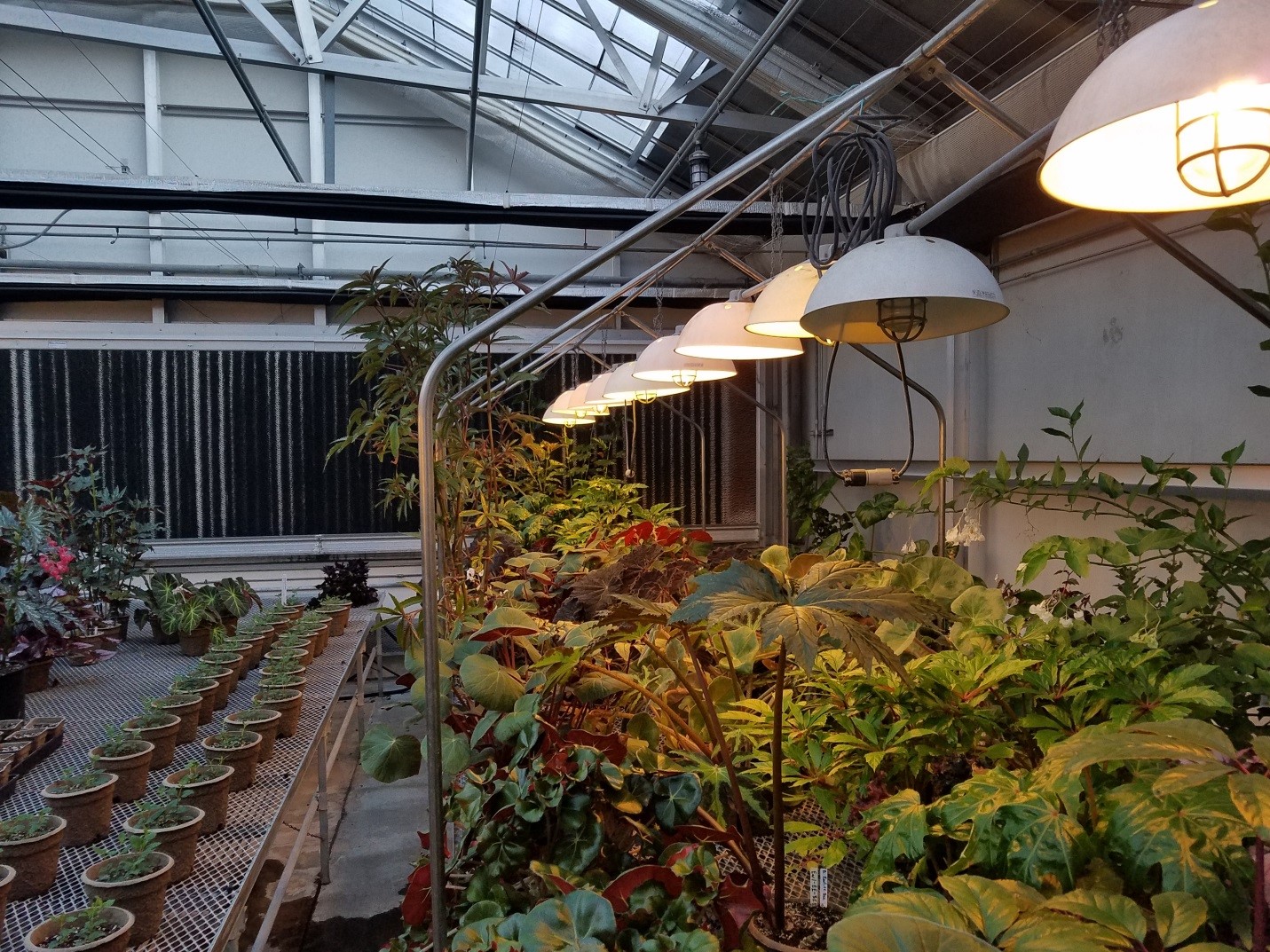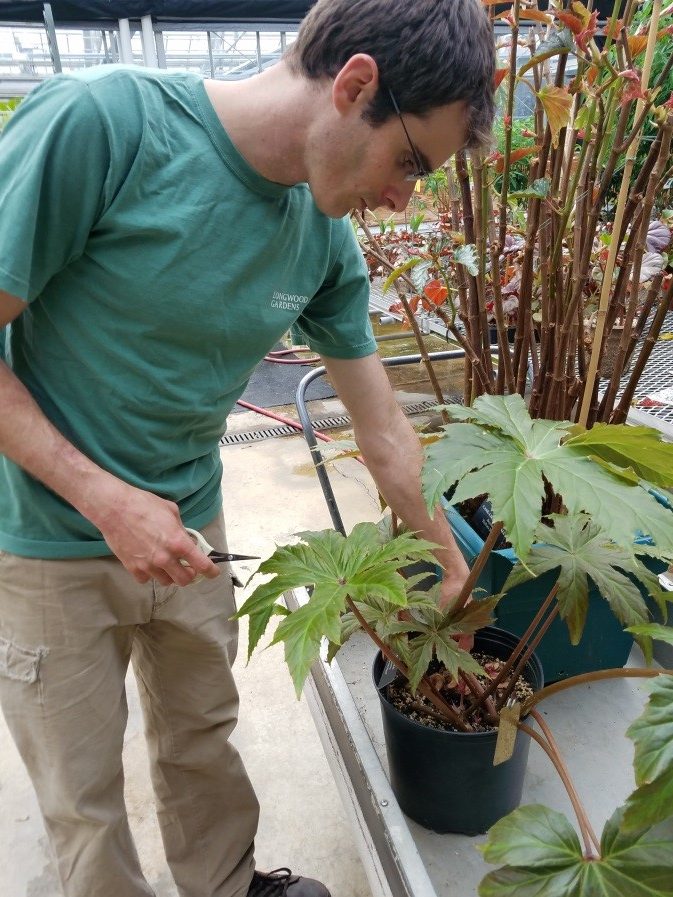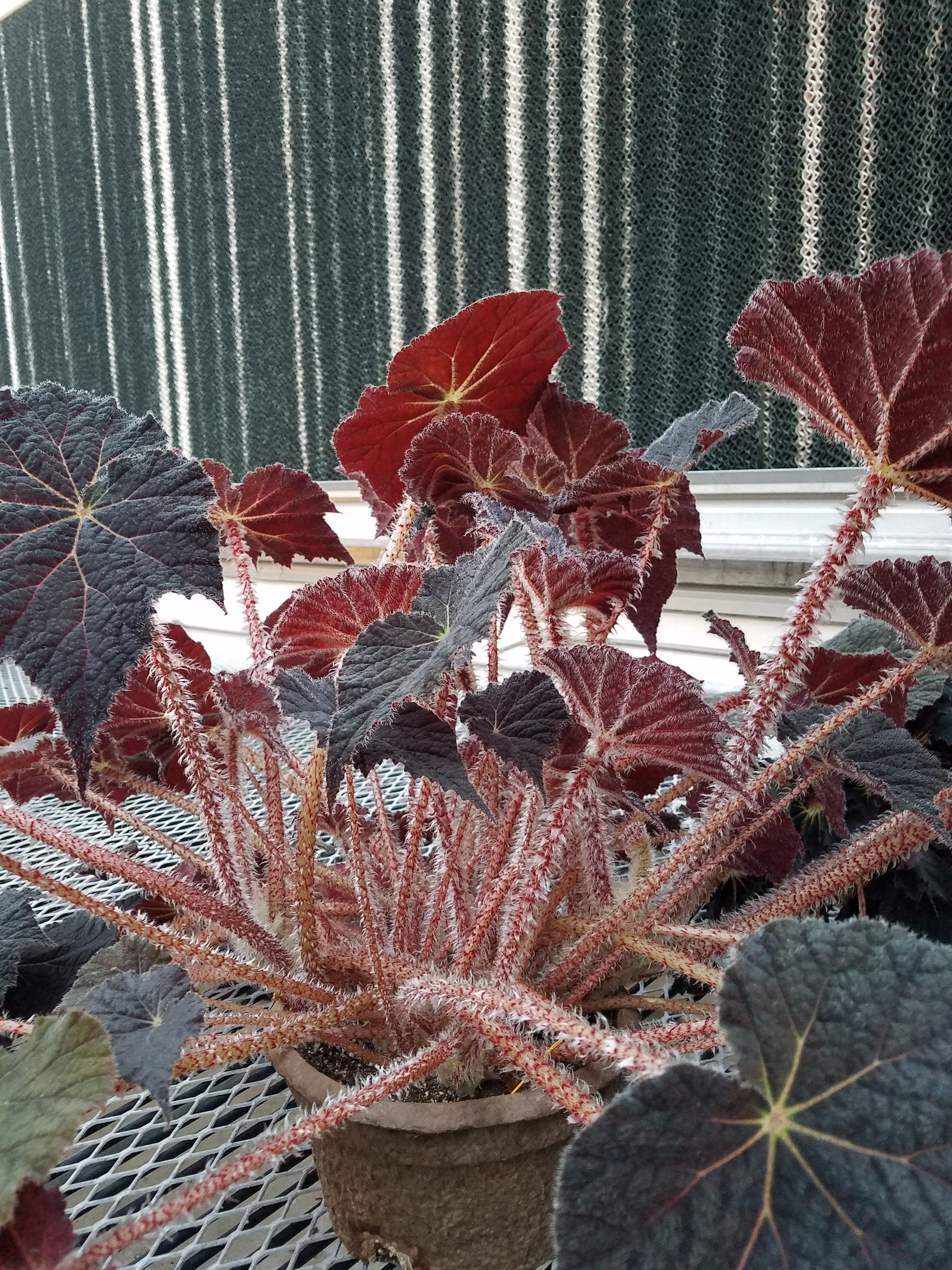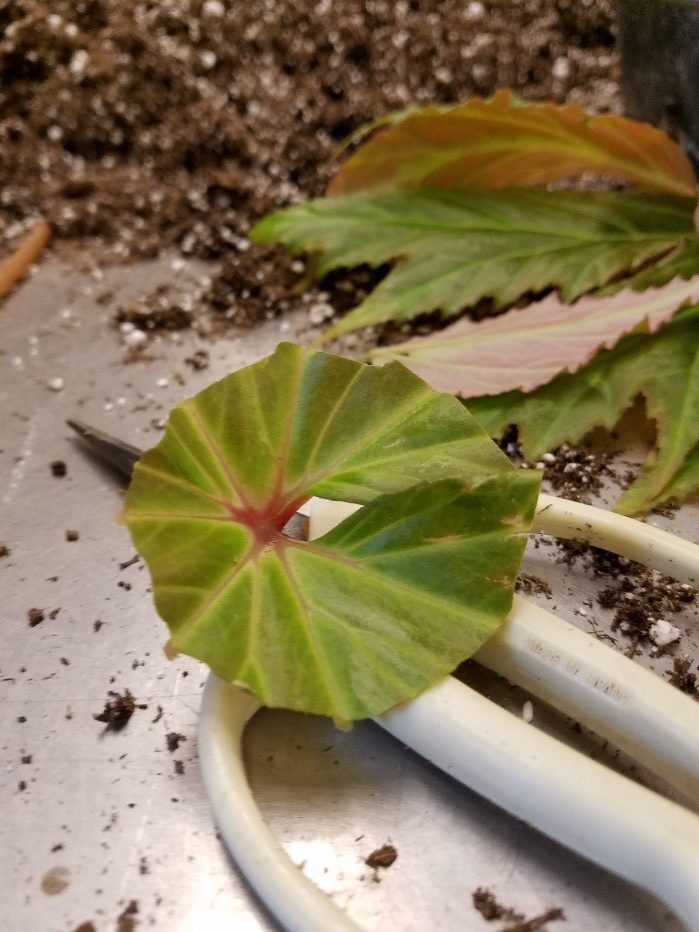
Working With Longwood Gardens’ Begonia Collection
While there are numerous areas of study in the field of horticulture, Floriculture crop production is arguably part of the foundation of this broad field. Having the knowledge to grow a crop requires an understanding of the fundamental principles of biology as well as other more advanced subjects. Growing plants reinforces the principles of horticulture while incorporating other skills. Growers must be able to replicate ideal growing environments for various plants while manipulating different variables to achieve the desired result.

Longwood Gardens Begonia Collection
In addition, growers need the knowledge to operate greenhouse components and its software, as well as be competent in soil chemistry, entomology and plant pathology. This skill set is taught in the classroom, but the real knowledge is derived from actually practicing what you learn. Therefore, we were afforded the opportunity to shadow a grower from Longwood Gardens as part of the grower mentoring project in our Floriculture Production class.
Having previously worked in Longwood’s production houses, I was inclined to work with a grower from that area. Plant propagation has always fascinated me and the lower production facility contains a greenhouse dedicated to the propagation of various plants that are used for display throughout Longwood Gardens.

One of the head growers, Ryan Knauer taking cuttings for propagation
The production house is under the care of Ryan Knauer, one of the head growers in lower production. Ryan is originally from Anderson, South Carolina and has been a grower at Longwood for 5 years. Prior to coming to Longwood, Ryan was a grower at Peace Tree Farms and Gro n Sell. In addition to the hands-on experience, he received a BS from Clemson University and completed internships at Paul Ecke Ranch and Longwood Gardens. Having an interest in becoming a grower myself, I asked Ryan for advice on how to prepare to enter this industry. He said in order to be successful one must pay close attention to details regarding plant nutrition, the environment, and pests that are inevitable to come. Networking within this small industry is also a tip that was shared, as many opportunities arise from personal contacts.
Shadowing an experienced grower like Ryan allowed me to dig deeper into propagation techniques as well as into all the intricacies of being a grower. Since I couldn’t focus on all the plants that were being grown by Ryan, but still wanted some variety, we decided that working with the Begonia collection would be a perfect fit.
The Begonia collection began when Longwood acquired many new varieties from the USBG. These plants were evaluated by lead designer, Jim Sutton, to determine which were to stay. These varieties were added to a few old varieties that we already kept as stock. Since then some new varieties have also been added through purchases from private collections and other sources.
These Begonias are kept in the production house until a gardener is ready to use them in their display. They can be frequently observed in the main conservatory and in the Pierre du Pont house. One of the more unique cultivars is ‘Vista Quest’. It has an interesting form and habit with large palmate leaves and clusters of flowers that seemingly are always in bloom. Despite this, my favorite has to be Begonia ‘Frost’s Dorothy Behrends’. The fuzzy stems and tomentose leaves make it irresistible to touch and the contrast of the burgundy foliage with the white pubescence of the plant make this Begonia a stunning specimen.

Begonia ‘Frost’s Dorothy Behrends’ foliage

Begonias are photoperiodic plants and depending on the species, need a specific amount of day length to flower. Most of the Begonias in the collection are short-day plants that usually flower in the spring and fall. To artificially overcome these environmental flowering inhibitors, supplemental High-Pressure Sodium lights are used to extend the day length and blackout cloth is used to force short day plants to flower.
In addition to learning about the general physiology of these plants, I also categorized them into their respected groups based on their anatomy. There are eight accepted categories that classify them into groups based on their habit, form and other characteristics. Rex Begonias like B. ‘Phillip Seiden’ is known for the foliage while rhizomatous Begonias like B. acetosa have pronounced rhizomes. To learn about all the Begonia groups visit the Begonia Society Page.
My other responsibilities included cross-referencing accession tag numbers of the collection with the plant explorer database, documenting their health and assessing which need to get repotted or propagated. Propagation of Begonias is usually done through leaf or stem cuttings depending on the species.
We have started propagation with B. ‘Earl-ee-bee’ by using leaf cuttings. The leaf is cut into sections along the midrib or close to the petiole, which exposes meristematic tissue that forms a callus when placed in soil media. Plant calluses are a mass of undifferentiated cells that begin regeneration of the plant once plant hormones like auxin and cytokinin signal those undifferentiated cells to begin root formation. They can be derived from many different cell types as a response to wounding.

Begonia leaf cutting
Stem cuttings will also form a callus and are used in the propagation of Begonias such as B. aconitifolia. Once the stem is cut, auxin is translocated from the growing point to the wound, initiating root formation. Some tuberous Begonias can be divided, although this process often leaves an undesirable plant and is not normally used.
There are numerous propagation principles and techniques I have yet to explore, but this short apprentice grower project along with the classroom experience has given me a solid foundation on which to build upon. Thank you for taking the time to read about my experience.




